Top 10 Temples In IndiaThe term "temple" can be used to describe a variety of buildings and houses of worship. A temple is a structure set aside for religious ceremonies and practices, including prayer and sacrifice. Religions that build holy sites usually involve Christianity (whose buildings are generally referred to as churches), Hinduism (whose buildings are made reference to as Mandir), Buddhism, Sikhism (for whom the buildings are made reference as gurudwara), Jainism (to whom the buildings are occasionally alluded to as derasar), Islam (whose monuments are occasionally referred to as mosques), Judaism (for whom the buildings are occasionally alluded to as synagogues). Zoroastrianism, whose buildings are occasionally alluded to as Agiary, the Baha'i Faith, which is regularly alluded to as the Baha'i House of Worship, Taoism, which would be occasionally referred to as Daoguan, Shinto, which is occasionally referred to as Jinja, Confucianism, which is occasionally referred to as the Temple of Confucius, and ancient religions like that of the Ancient Egyptians and that of the Ancient Greeks. The ancient Egyptian pyramids, Hindu Shiva temples, and Mormon temples are a few examples of temples. India is a stunning country with amazing temples, a few of which have been a part of the landscape for millennia. People have always been drawn to these temples because of their beauty, architecture, and cultural significance, not just in India but also across the world. These can offer an insightful lesson on the development and history of Indian culture. India's many religious communities' vibrant colors contribute to the nation's wonderful identity. These ideologically disparate societies coexisting peacefully create a cordial environment free of discord. India's population rejoices in the unrestricted freedom to practice and celebrate their chosen faith. Given that there are 900 million Hindus worldwide, the prevalence of Hindu temples in the nation shouldn't surprise. The nation is home to many Hindu temples. As old as the earth itself, some of them. This is why you can find a place of worship in every part of the nation, regardless of your religion. Hindu temples have been constructed using many architectural styles and astounding spectators. Because worshippers have taken great care to preserve their ancestry, these ancient temples have withstood the test of time. Following Is The List Of The Top 10 Temples In India: 1. Kashi Vishwanath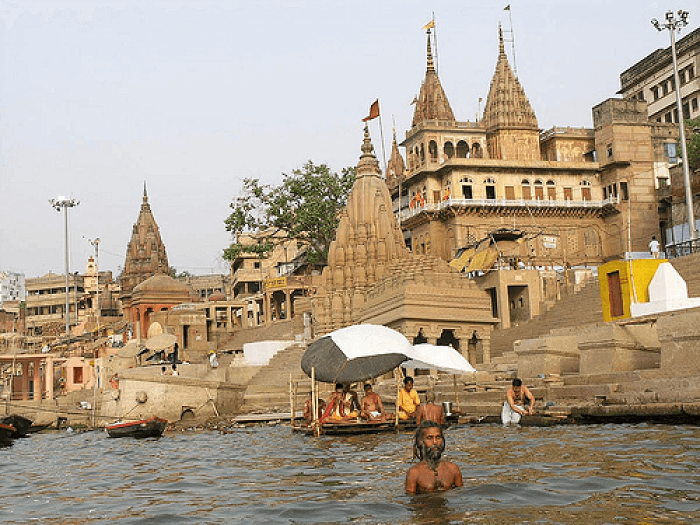
The famous Hindu building for Lord Shiva is indeed the Kashi Vishwanath Temple. It is situated in Varanasi, Uttar Pradesh, India's Vishwanath Gali. Being one of the twelve Jyotirlingas, the most sacred Shiva temples, the temple is located on the western bank of the holy Ganges. Shri Vishwanath and Vishweshwara, which literally translate to "Lord of the Universe," are the titles of the principal deity. Hindu texts see the temple as being at the center of Shaiva worship. It had been destroyed by Muslim tyrants multiple times, most notably by Aurangzeb, who built the Gyanvapi Mosque there. People from all over the world travel to Varanasi, one of the holiest towns, to see the Kashi Vishwanath temple. Visitors from all across the nation visit the sites and bathe in the sacred Ganges water. One of the oldest towns in India, Varanasi, goes back to the 11th century B.C. It is said that someone who takes a dip in the Ganges River is released from all of their negative karma. The Maratha ruler Ahilyabai Holkar of Indore erected the existing building in a nearby location around 1780. The Uttar Pradesh government has been in charge of the temple's administration since 1983. Any Shiva event is the ideal chance to visit Kashi Vishwanath Temple. The ideal time to visit Kashi Vishwanath Temple is during the Shravan month. Thousands of followers come to the temple during Sawan to ask for Baba's blessings. Devotees regard the holy season as lasting from Guru Purnima to Raksha Bandhan Purnima. The finest dates to visit the temple include Durga Puja and Dusshera. The most gorgeous ceremony in Varanasi is Ganga aarti. It would be best if you did not skip it. At Dashashwamedh Ghat, a priestly group offers the aarti. Kashi Temple is only 500 meters away from Dashashwamedh Ghat. A particular kind of aarti is done on Tuesdays, religious festivals, and sacred occasions. The priest conducts the Aarti. These are clothed in the same fabric: a dhoti, a kurta with a securely tied kurta, and a kurta covered with a long towel. They get ready for the Ganga Aarti. 2. Amarnath Cave Temple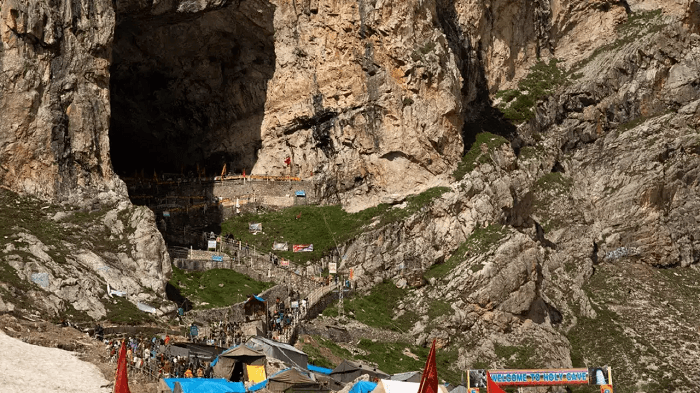
In the Indian state of Jammu and Kashmir's Anantnag area, there is a Hindu sanctuary known as Amarnath Temple. The cave is located at an elevation of 3,888 m (12,756 ft), about 168 kilometers from the district headquarters of Anantnag and 141 km (88 mi) from Srinagar, which is reachable through the town of Pahalgam. The shrine represents an essential component of Hinduism. Glaciers border the Lidder Valley cave and snow-capped mountains and are mostly always covered in snow, with the exception of a brief window during the summer when it is accessible to pilgrims. Devi Adi Shakti's neck is supposed to have fallen atop Amarnath Cave in Jammu and Kashmir. At the same time, Lord Shiva danced about with Mata Sati's charred corpse, and Lord Vishnu used his Sudarshan Chakra on the body. A shrine was built to preserve and revere this aspect of the Mother; this shrine ultimately became known as the Amarnath Temple. One of the 51 Shakti Peethas, or temples, located throughout the Indian Subcontinent to honor the site of a fallen corpse is the Amarnath cave, home of the Mahamaya Shakti Peetha. A Swayambhu lingam serves as the Shiva Lingam at the temple. Amarnath is less of a temple and more of a cave. There are two other ice structures that stand in for Parvati and Ganesh in addition to the Shiva Linga. It is said that this is where Shiva gave his celestial spouse Parvati an explanation of existence and eternity. Since it takes five days to walk to the temple, several NGOs have put up food stands and lodging along the road. Additionally, helicopters are accessible. Along the route, tents are installed. The location is well guarded by the authorities each year, however one must be cautious of the masses. The faint of heart should avoid doing this trek. 3. Lingaraja Temple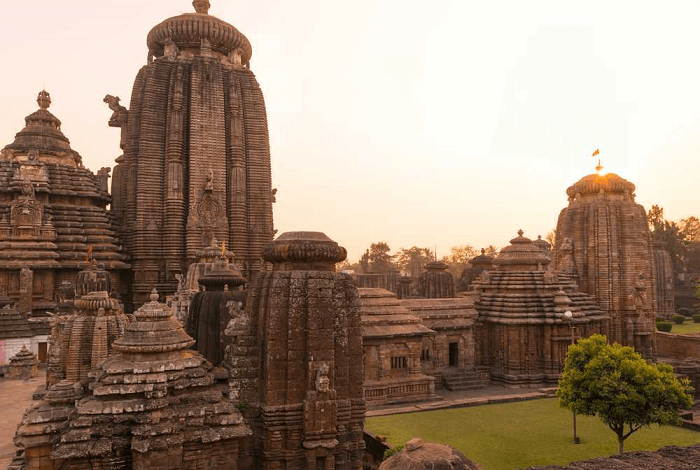
Lingaraja, the largest temple in India, is devoted to the Hindu gods Vishnu and Shiva. One of the top attractions in Odisha is this temple. Bindu Sagar Lake is a body of water located behind the temple. It is thought that the lake's water has extraordinary therapeutic qualities. This temple is acclaimed for its exquisite construction and is one of the most well-liked temples in the nation for the Hindu population. The 180-foot-tall majestic structure inspires awe and reverence in its guests. constructed in the eleventh century. James Fergusson, a well-known critic, and historian said the temple was "One of the greatest specimens of fully Hindu Temple in India" (1808-1886). The temple represents the pinnacle of the Kalinga School of Temple Architecture, which originated in Bhubaneswar. There are 150 auxiliary shrines within the large temple complex. The temples' intricate design, proportions, flawless joints, superb craftsmanship, and astonishing size make them regarded as masterpieces of Indian architecture. There are four primary halls that make up the temple. Sanctum Sanctorum structures include the Garba Griha, Yojana Mandapa, Natya Mandapa, and Bhoga Mandapa, where devotees can partake of the Lord's Prasad (offering). The ideal months to visit the temple are thought to be January through March. 4. Tirumala Tirupati Venkateswara Temple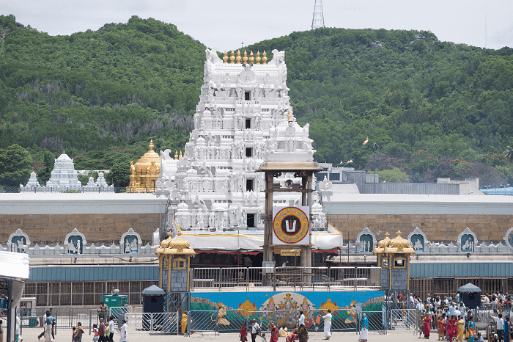
One of India's most important and respected Hindu temples is the Venkateswara Temple. It is situated on the Tirumala Hills, which Hindus regard as sacred. Lord Venkateswara, commonly known as Balaji or Subrahmanya, is the temple's main deity. The temple provides a breathtaking perspective of the city and the sea and is encircled by lovely gardens. Tirumala (Tiru means holy and Mala means hill) is an important pilgrimage site close to Tirupati town in the Chittoor district of Andhra Pradesh, India. It is situated on a hilltop, 853 meters above the main sea level, in the country's southern portion. On the Eastern Ghats range, the town of Tirupati is located at North Latitude 13°38' and East Longitude 79°25'. It is also located at North Latitude 13°41' and East Longitude 79°21'. This revered Tirumala hill temple, also known as the Seshachala hills, has an area of 10.33 square miles and is made up of seven hills: Seshadri, Neeladri, Garudadri, Anjanadri, Vrishabhadri, Narayanadri, and Venkatadri. On the seventh hill of Venkatadri is where the main temple of Tirumala is located. More intriguingly, there were several miraculous occurrences in which followers saw Lord Venkateswara's human appearance. The great faith of devotees in Lord Venkateswara has reached many unimaginable heights as a result of such spine-chilling real accounts regarding his existence on the revered Tirumala hills. 5. Dwarkadhish Temple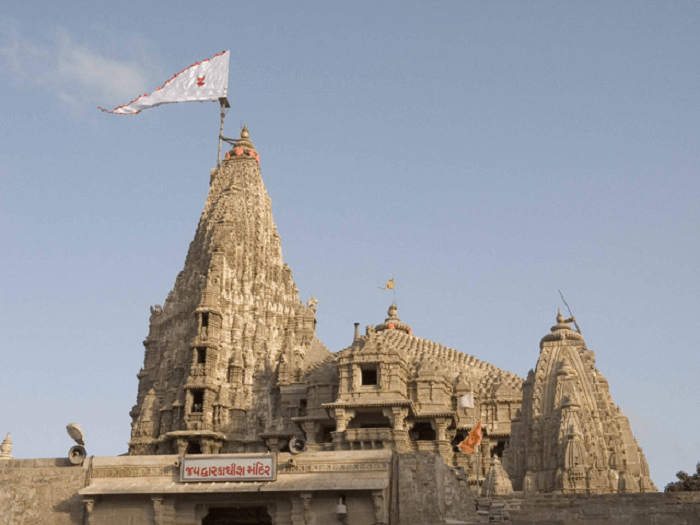
The most stunning temple in Gujarat is renowned throughout the nation for its elaborate architecture and artwork. The third Dwarkadheesh-also known as Dwarkanath-sits like a black marble idol in the temple. There Are several breathtaking ceiling murals that show different aspects of the Lord's life. The intricate patterns and workmanship of Rajasthani architecture further add to the complex's magnificent appearance. The excitement at the Dwarkadhish temple, where Lord Krishna is held in a hindola throughout the Shravan month, increases (a type of swing set). Every day, tens of thousands of people come here to worship Lord Krishna. There is no entrance cost for visiting the Dwarkadhish temple, which is true for both domestic and foreign visitors. In the summer, the temple is open from 6:30 am to 10:30 am and from 4:00 pm to 7:00 pm, while in the winter, it is open from 6:30 am to 10:30 am and from 3:30 pm to 6:00 pm. Due to the beautiful weather, it is advised to visit the Dwarkadhish temple between October and March. 6. Rameshwaram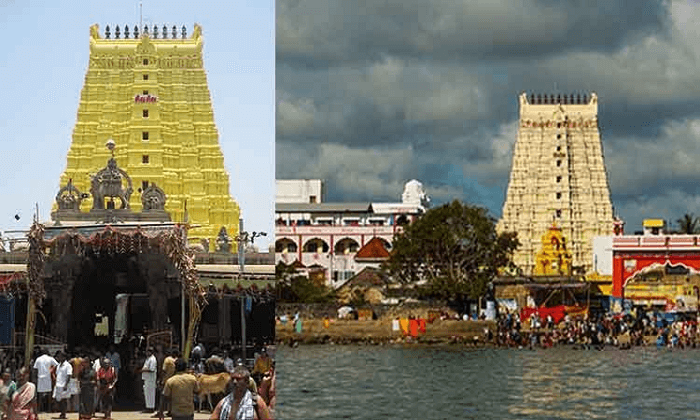
Rameshwaram is known as the Kashi of the South and is home to the Lord Shiva-dedicated Ramanathswamy Temple. The temple stands as a testament to Adi Shankaracharya's belief in Hinduism, as it is presented in Advaita Vedanta. For Shiva devotees who worship the Jyotirlinga at the Ramanathswamy Temple, it is of utmost importance and holy. As a result of their adoration for Lord Rama, Vaishnavites have a strong devotion to Rameshwaram (Incarnation of Lord Vishnu). Pamban Island, which lies at the very point of the Indian Peninsula, is where you'll find the Rameshwaram district. A Pamban bridge that emerges from the Pamban Channel in the Gulf of Mannar connects the island to the mainland. Due to the magnificent temple in the Rameshwaram area, Pamban Island is also known as Rameshwaram Island. Rameshwaram has seasonal changes. However, temperature swings are quite seldom. Rameshwaram may be visited throughout the year, although each season has its own unique complexity. The monsoon season (July to September) is the greatest time to view the coastline region's picturesque magnificence. Temperatures throughout the winter months of October through December can drop as low as 17 degrees Celsius. The greatest time to explore neighborhoods and go sightseeing is during the winter. The optimum time to visit Rameshwaram Temple is from October to April. Shiva is a principal deity in the Rameshwaram temple. Rameshwaram is noteworthy primarily because it is one of the 12 Jyothrlinga Shrines. 7. Sri Virupaksha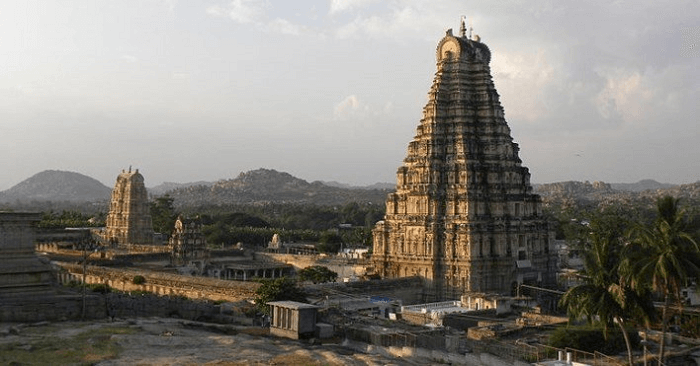
One of the most well-known tourist attractions in Pattadakal is the Lord Shiva-dedicated Virupaksha Temple, the sole operating shrine inside the main temple. Queen Lokamahadevi, the spouse of the Chalukyan emperor Vikramaditya, built the temple in 745 AD to mark his victory against the Pallavas of Kanchi. The temple, constructed in the Dravidian architectural style, features three mukhamandapas on its three sides and a substantial stone entrance on its eastern side facing the Malaprabha River. Following a sanctum with a circular route for pradakshinas comes a big hall with pillars. Beautiful sculptures of gods and scenes from the Ramayana and Mahabharata may be seen on the hall's mukhamandapas and pillars. The artwork of God Surya and his paramours riding a chariot, which is sculpted on the roof of Eastern Mukhamandapa, is the focal point of the temple. Ravana raising Mount Kailash, Narasimha killing Hiranyakasipa, Parvathi's marriage scenes, Kurukshetra War Scenes, Fight between Bheema and Duryodhana, Fall of Bhishma, Scenes from the Ramayana, Samudra Madhana, Mruthyunjaya, and large dwarapalakas are some of the other well-known sculptures at Virupaksha Temple Nice pictures, such as that of Brahma seated on a lotus, may be seen on the Mukha mandapa's ceiling. A few magnificent sculptures, like Hanuman holding Sanjivani Hill and Gajendra Moksha, can be seen on the temple's outside walls. Opposite the temple is a sizable Nandi mandapa that houses a monolithic Nandi made of black stone. There are a few lovely sculptures of female figures on the Nandi mandapa's walls. Between October and March is the ideal period to visit Sri Virupaksha Temple. 8. Badrinath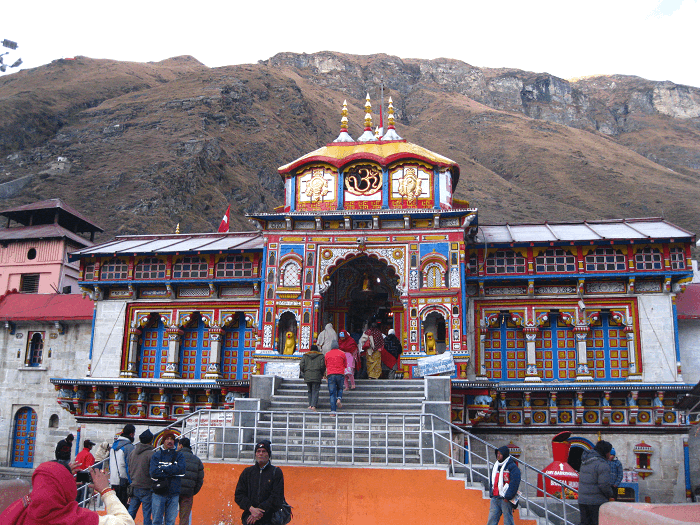
Badrinath is a stop on the revered Chardham Yatra, which attracts tens of thousands of pilgrims each year. The Badrinath temple, which is devoted to Lord Vishnu, is a significant spiritual attraction in India. The temple is situated in the Chamoli district of Uttarakhand's Garhwal hills at an elevation of 10,000 feet. The holy shrine is shut for most of the year owing to the high altitudemajority of the year owing to the high altitude, though. Badrinath often has cold weather, with winters reaching below-freezing temperatures. Badrinath is inaccessible during the severe winters due to its location in Uttarakhand's Himalayan highlands. May, June, and September, October are the ideal months to visit Badrinath. Mandir, however, determines the precise dates for temple shrine openings. In the winter, Badrinath's temperature drops below freezing temperature. Badrinath has severe rains and temperatures that drop below 15 degrees Celsius during the monsoon season. The summertime temperature at Badrinath ranges from 8 to 18 degrees. The Badrinath temple isn't open in the winter due to the region's frequent severe rain. One of the holiest places for Hindus to visit is the Badrinath temple in Uttarakhand. The number of devotees visiting these temples annually has been steadily increasing thanks to improved transportation and simple accessibility. The warm months of May to June are the ideal time to visit Badrinath. 9. Kedarnath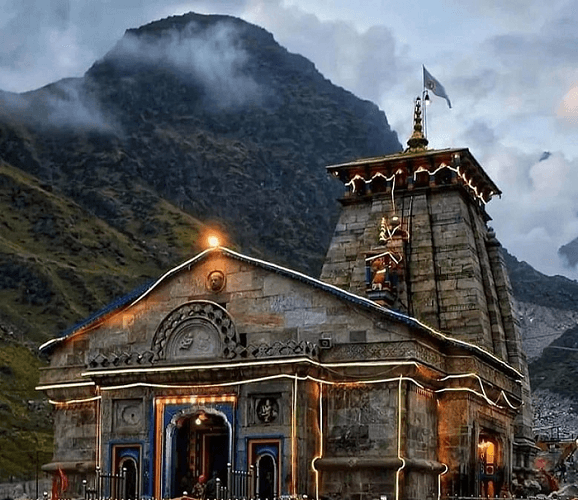
One of those famous temples, Kedarnath Temple, is located at a high altitude and attracts a large number of pilgrims from all over India and the rest of the globe. When you enter the grounds of this sacred shrine, the views and mountains are just breathtaking, and the serene air of the temple surrounds you. Kedar, which is said to be the title of Lord Shiva, was built in the eighth century A.D. using many stones on a sizable rectangular platform. The Mahabharata served as the inspiration for Adi Shankaracharya when he erected the existing temple. The figure of the Jyotilingam, also known as the cosmic light, is said to be a manifestation of Lord Shiva, making Kedarnath the holiest of the twelve heavenly Jyotirlingas. Numerous gods and goddesses are shown in religious detail on the inside walls, and many important scenes from Hindu mythology are also mentioned. Legends based on the Mahabharata claim that the Pandavas sought Lord Shiva's grace in order to make up for wrongdoings committed after the fight. As a result, Lord Shiva continually avoided them and sought refuge in Kedarnath as a bull. He plunged into the earth, and when he was found, all that was left on the ground was his hump. Because of this, a large Nandi Bull idol serves as a guard. The temple contains a slender cone-shaped image that is also revered as Lord Shiva in his Sadashiva Form. This ancient shrine, situated at an altitude of around 3,581 meters, has undergone several renovations. In addition, Sonprayag is only 21 kilometers away. The celestial Shiva statue is transported from Kedarnath to Ukhimath even during winter, around November and then returned to Kedarnath during the first week of May. Kedarnath Temple is primarily open from May to October, which is also the fun season to visit and feel spirituality. 10. Jagannath Temple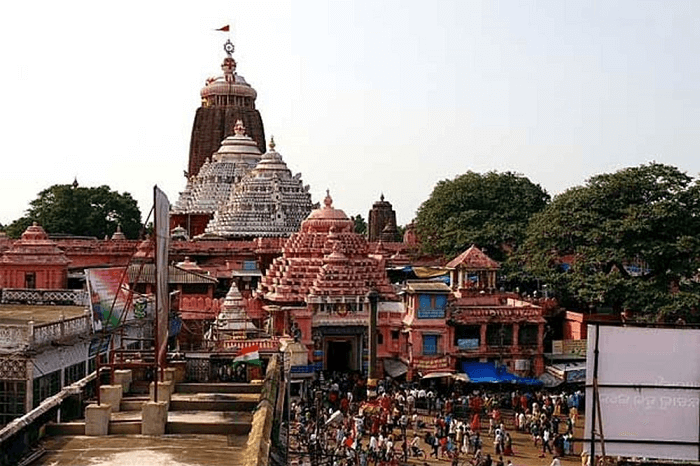
Jagannath Temple in Puri is The Jagannath Shrine, which is situated in Odisha's Puri, and is a very significant Hindu temple, particularly for Vaishnavites. It is one of the Char Dhams and one of the most popular pilgrimage sites in the nation. The temple, which is located on the Eastern Coast, is home to the three main deities Lord Jagannath (who is known as the "Lord of the Universe"), Lord Balabhadra, the elder brother, and Lordess Subhadra, the sister. According to Odisha Tourism, the temple is governed by the Archaeological Survey of India and is regarded as the home of the Lord of Odisha. Lord Jagannath is indeed the Ultimate God, according to the temple's management, from which all avatars or embodiments emanate and with whom they all unite again. The temple receives significance among Vaishnavites because it is based on several Sanatan Dharma texts and corresponds with Lord Vishnu's role. But the Rath Yatra, when the popularity of Jagannath Temple is at its height, is what is most famous about the temple. However, several other holidays are fervently observed at the temple and during which tourists are welcome to attend. The yearly Rath Yatra, commonly referred to as the Gundicha Yatra, is the most well-known celebration held at the temple. The three primary deities are transported during the Yatra from the main temple to a shrine called Gundicha Ghar, approximately 3 kilometers from the Jagannath Temple, on three specially made chariots on the middle day of the Shukla Paksha of the Asadha month, according to the Hindu calendar. Another well-known yearly event that occurs at the temple is the Snana Yatra. The good yearly bathing practice is performed on the Jyestha month full moon, which often falls in June. This is thought to be Lord Jagannath's birth anniversary. After the first aarti rite, approximately 7 a.m. or after 9 p.m. is the ideal time to visit the Jagannath Temple.
Next TopicTop 10 Healthy Foods
|
 For Videos Join Our Youtube Channel: Join Now
For Videos Join Our Youtube Channel: Join Now
Feedback
- Send your Feedback to [email protected]
Help Others, Please Share










